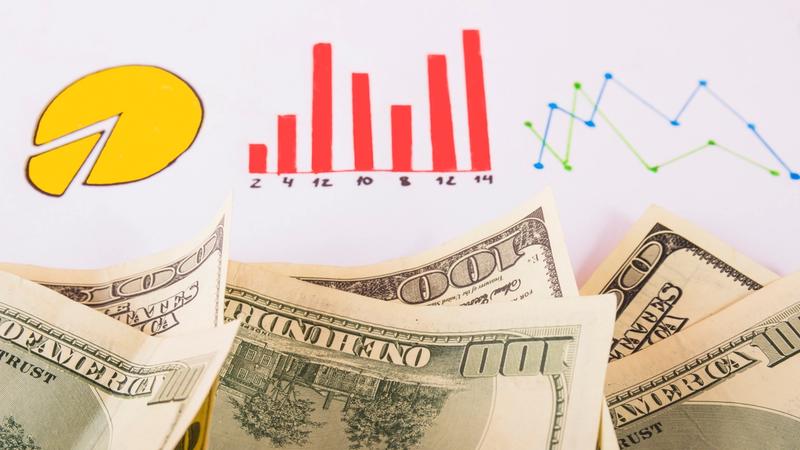Break Even Point: How to Calculate & Analyze + Free Tool
Discover how to calculate your business's break-even point and analyze its impact. Use our free tool to create your first cash flow projection.
Temitope Ayegbusi

Understanding your business's financial health is crucial for making informed decisions. One key metric that can help you achieve this is the break even point. Calculating your break even point is essential for determining when your business will become profitable.
If you're already familiar with the term “break even point” , you can use our free tool to create your first report today. However, if you're unsure how it impacts your business or what strategies to implement for better financial health, this guide will walk you through the process.
Try out the break even point free tool
This article will provide a comprehensive overview of break even analysis and how to use a break even calculator to make informed business decisions.

Understanding the Break Even Point in Business
The break-even point is the point at which a business's total revenue equals its total fixed and variable costs. Here is a Scenario Example for Small Business Owners
Let’s say you run a bakery:
- Your monthly fixed costs are $5,000 (rent, salaries, utilities).
- Each cake costs you $10 to make (ingredients, packaging).
- You sell each cake for $20.
That means every cake gives you a $10 profit margin ($20 – $10). To figure out your breakeven point, you divide your total fixed costs by the profit margin per cake: which is $5000/10 = 500 cakes.
So, you must sell 500 cakes in a month just to cover your costs. Once you sell cake number 501, you’ve passed the breakeven point and started making a real profit.
Why Every Business Owner Needs Break Even Analysis
Conducting a break-even analysis is essential for business owners who want to make informed decisions about their operations. By understanding their break-even point, businesses can identify areas for cost reduction and optimize their pricing strategies. Here are some key benefits of break-even analysis:
- Helps determine the minimum sales required to cover costs
- Identifies areas for cost reduction
- Informs pricing strategies
- Enhances financial planning and decision-making
Our Free Break Even Calculator Tool
To make it easier for businesses to calculate their break-even point, we offer a free break-even calculator tool. This user-friendly tool allows businesses to input their fixed costs, variable costs, and selling price to determine their break-even point. By using our break-even calculator, businesses can quickly and easily understand their financial situation and make informed decisions.
Try out the break even point free tool
The Essential Components of Break Even Analysis
To grasp the concept of Break Even Analysis, it's essential to understand its core components. Break Even Analysis is a powerful tool that helps businesses determine when they will become profitable. By understanding fixed costs, variable costs, and contribution margin, you can make informed decisions about pricing, production, and sales strategies.
Fixed Costs: What They Are and Examples
Fixed costs are expenses that remain the same even if the business produces more or less of its product or service. Examples include rent, salaries, and insurance.
These costs are crucial in determining the break even point because they are incurred regardless of the level of production or sales. For instance, a company that pays $10,000 per month in rent will have to cover this expense whether it sells 100 units or 1,000 units of its product.
Examples of fixed costs include:
- Rent and utilities
- Salaries and benefits for employees
- Insurance premiums
- Depreciation and amortization
Variable Costs and Their Relationship to Sales
Variable costs, on the other hand, are expenses that vary directly with the level of production or sales. Examples include the cost of raw materials, labor costs directly related to production, and sales commissions. As sales increase, variable costs also increase. Understanding the relationship between variable costs and sales is critical in determining the break even point and in making decisions about pricing and production levels.
Contribution Margin: The Key to Profitability
The contribution margin is the difference between sales revenue and variable costs. It represents the amount of money available to cover fixed costs and generate profit. A higher contribution margin indicates that a business has more flexibility to invest in growth initiatives or to weather economic downturns. By understanding and managing the contribution margin, businesses can optimize their pricing strategies and improve their overall profitability.
For example, if a product sells for $100 and has variable costs of $60, the contribution margin is $40. This $40 contributes to covering fixed costs and generating profit.
Break Even Point Formulas and Calculations
The break even point is a critical metric that businesses must understand to ensure profitability. It represents the point at which a company's total revenue equals its total fixed and variable costs, resulting in neither profit nor loss.
Units-Based Break Even Formula
The units-based break even formula calculates the number of units a business must sell to break even. The formula is: Break Even Units = Fixed Costs / (Selling Price per Unit - Variable Cost per Unit). This formula is essential for businesses that produce or sell tangible products.
For example, if a company has fixed costs of $10,000, sells its product for $50 per unit, and has a variable cost per unit of $30, the break even units would be calculated as follows: Break Even Units = $10,000 / ($50 - $30) = 500 units.
Key components of this formula include:
- Fixed Costs: Costs that remain the same even if the company produces more or less.
- Selling Price per Unit: The price at which the product is sold.
- Variable Cost per Unit: Costs that vary with the production or sale of each unit.
Revenue-Based Break Even Formula
The revenue-based break even formula calculates the total revenue required for a business to break even. The formula is: Break Even Revenue = Fixed Costs / Contribution Margin Ratio. This formula is particularly useful for businesses with multiple products or services.
For instance, if a company has fixed costs of $10,000 and a contribution margin ratio of 0.4 (or 40%), the break even revenue would be: Break Even Revenue = $10,000 / 0.4 = $25,000.
To apply this formula effectively, businesses must:
- Accurately determine their fixed costs.
- Calculate the contribution margin ratio by dividing the contribution margin by sales revenue.
Using Contribution Margin for Break Even Analysis
The contribution margin is a crucial element in break even analysis, representing the amount of money available to cover fixed costs after variable costs have been deducted from sales revenue. It is calculated as: Contribution Margin = Sales Revenue - Variable Costs.
A higher contribution margin indicates a more profitable product or service, as more revenue is available to cover fixed costs and generate profit. By understanding and utilizing the contribution margin, businesses can make informed decisions about pricing, production levels, and product mix.
Benefits of using contribution margin include:
- Better pricing decisions.
- Improved product mix decisions.
- Enhanced profitability analysis.
Step-by-Step Guide to Calculate Your Break Even Point
The break even point is a vital metric that helps businesses understand when they will start generating profits. Calculating it involves several key steps that provide valuable insights into your business's financial health.
Identifying and Totaling Your Fixed Costs
Fixed costs are expenses that remain the same even if your business produces more or less of its product or service. Examples include rent, salaries, and insurance.
To identify your fixed costs, review your business's financial records, such as balance sheets and income statements. List all the expenses that don't change with production levels. Total these costs to get your overall fixed expenses.
Examples of fixed costs include:
- Rent and utilities
- Salaries and wages
- Insurance premiums
- Depreciation
Calculating Your Variable Cost per Unit
Variable costs are expenses that change with the level of production or sales. These include costs like raw materials, packaging, and labor directly involved in producing your product or service.
To calculate your variable cost per unit, divide the total variable costs by the number of units produced or sold.
For instance: If your total variable costs are $10,000 and you produced 1,000 units, your variable cost per unit is $10.
Putting the Numbers Together: Complete Calculation
Once you have your fixed costs and variable cost per unit, you can calculate your break even point. The formula for break even units is: Fixed Costs / (Selling Price per Unit - Variable Cost per Unit). This calculation gives you the number of units you need to sell to cover your costs.
For example, if your fixed costs are $50,000, your selling price per unit is $20, and your variable cost per unit is $10, your break even units would be 5,000. This means you need to sell 5,000 units to break even.
Key takeaways from this calculation include:
- Understanding the importance of pricing strategies
- Recognizing the impact of fixed and variable costs on profitability
- Setting sales targets based on your break even analysis
Real-World Break Even Analysis Examples
In this section, we'll explore real-world examples of Break Even Analysis in different industries, demonstrating its versatility and importance in business decision-making.
Retail Business Case Study
Let's consider a retail business example. Suppose a clothing store, "FashionForward," has fixed costs of $10,000 per month, sells each item for $50 on average, and has a variable cost per unit of $30.
To calculate the Break Even Point, we use the formula: Break Even Sales = Fixed Costs / (Selling Price - Variable Costs). For FashionForward, this would be $10,000 / ($50 - $30) = 500 units. Thus, FashionForward needs to sell 500 units per month to break even.
Service Business Break Even Example
Now, let's examine a service-based business. A consulting firm, "ExpertAdvice," charges $100 per hour and has fixed costs of $5,000 per month.
If the variable cost per hour is $20, the Break Even Point in hours would be calculated as: Break Even Hours = Fixed Costs / (Hourly Rate - Variable Cost per Hour) = $5,000 / ($100 - $20) = 62.5 hours. Therefore, ExpertAdvice needs to bill at least 63 hours per month to break even.
Manufacturing Break Even Scenario
For a manufacturing business, consider "TechManufacturing," which produces electronic components. If their fixed costs are $20,000 per month, the selling price per unit is $100, and the variable cost per unit is $60, the Break Even Point in units would be: Break Even Units = Fixed Costs / (Selling Price - Variable Costs) = $20,000 / ($100 - $60) = 500 units.
Thus, TechManufacturing needs to produce and sell 500 units per month to reach the Break Even Point.
These examples illustrate how Break Even Analysis can be applied across different industries to inform business decisions and drive profitability.
How to Use Our Free Break Even Point Calculator
Understanding your break even point is crucial, and our calculator makes it easy to determine. The break even point is a critical metric in business, representing the point at which your total revenue equals your total fixed and variable costs. By using our free Break Even Point Calculator, you can quickly and accurately calculate this important figure.
Step-by-Step Tool Instructions
To use our Break Even Point Calculator, start by entering your fixed costs. These are expenses that remain the same even if your business produces more or less of its product or service. Examples include rent, salaries, and insurance. Next, input your variable cost per unit, which includes costs like materials and labor that vary with production levels. Finally, enter your selling price per unit. The calculator will then compute your break even point in units and revenue.
Here's a step-by-step guide:
- Enter your total fixed costs.
- Input your variable cost per unit.
- Enter your selling price per unit.
- Click 'Calculate' to see your break even point.
Analyzing and Applying Your Results
Once you've calculated your break even point, you can use this information to inform your business strategy. For instance, if your break even point is too high, you may need to reduce costs or increase prices. Conversely, a low break even point might indicate a profitable business model. Use our calculator to regularly review your break even point and adjust your strategies accordingly.
Some key applications include:
- Evaluating the viability of new products or services.
- Assessing the impact of cost changes on profitability.
- Setting sales targets based on your break even analysis.
Strategies to Lower Your Break Even Point
Reducing the break even margin is a key objective for businesses aiming to increase profitability. By implementing effective strategies, companies can lower their break even point, thereby enhancing their financial stability and competitiveness.
Reduce Fixed Costs
One of the primary ways to lower the break even point is by reducing fixed costs. This can be achieved through various means, such as renegotiating lease agreements, reducing utility expenses, or streamlining operational processes. By minimizing fixed expenses, businesses can significantly decrease their break even cost.
For instance, a company might consider downsizing its office space or adopting energy-efficient practices to cut down on utility bills. Such measures not only reduce fixed costs but also contribute to a more sustainable business model.
Optimize Variable Expenses
Optimizing variable expenses is another crucial strategy for lowering the break even point. Businesses can achieve this by negotiating better terms with suppliers, improving production efficiency, or reducing waste. By minimizing variable costs, companies can enhance their contribution margin, thereby improving profitability.
For example, a manufacturing business might adopt lean production techniques to reduce material waste and lower production costs. Similarly, a retail business could negotiate discounts with suppliers to reduce the cost of goods sold.
Pricing Strategies to Improve Contribution Margin
Pricing strategies play a vital role in improving the contribution margin. By adjusting pricing strategies, businesses can increase revenue without proportionally increasing costs. This might involve premium pricing for high-value products or services, or implementing price discrimination strategies to maximize revenue from different customer segments.
Effective pricing strategies require a deep understanding of customer behavior, market conditions, and cost structures. By analyzing these factors, businesses can set prices that not only cover costs but also contribute to profitability.
FAQ
What is the break even point, and why is it crucial for my business?
The break even point is the point at which your business's total revenue equals its total fixed and variable costs. Understanding your break even point is crucial because it helps you determine when your business will become profitable and make informed decisions about pricing, production, and investments.
How do I calculate my break even point?
To calculate your break even point, you need to know your fixed costs, variable costs, and selling price. You can use our free break even calculator or apply the break even formula: Break Even Point = Fixed Costs / (Selling Price - Variable Costs).
What is the difference between fixed costs and variable costs?
Fixed costs are expenses that remain the same even if your business produces more or less of its product or service, such as rent and salaries. Variable costs, on the other hand, are expenses that vary with production or sales, such as raw materials and labor costs.
How can I lower my break even point?
You can lower your break even point by reducing your fixed costs, optimizing your variable expenses, or improving your contribution margin through pricing strategies. Analyzing your break even analysis results can help you identify areas for improvement.
What is a break even graph, and how do I create one?
A break even graph is a visual representation of your break even analysis, showing the point at which your total revenue equals your total costs. To create a break even graph, you can plot your total revenue and total costs against the number of units sold or revenue.
How often should I review my break even analysis?
You should review your break even analysis regularly, ideally whenever there are significant changes in your business, such as changes in pricing, production costs, or market conditions. This will help you stay on top of your business's financial health and make informed decisions.
Can I use break even analysis for multiple products or services?
Yes, you can use break even analysis for multiple products or services. However, you'll need to calculate the break even point for each product or service separately, taking into account their individual costs and pricing.
How does break even analysis relate to my business's cash flow?
Break even analysis is closely related to your business's cash flow, as it helps you understand when your business will generate enough revenue to cover its costs and become profitable. By analyzing your break even point, you can better manage your cash flow and make informed decisions about investments and funding.
What is the contribution margin, and how is it used in break even analysis?
The contribution margin is the difference between your selling price and variable costs. It's used in break even analysis to determine the amount of revenue available to cover fixed costs and generate profit.
Can I use our free break even calculator for different currencies?
Yes, our free break even calculator can be used with different currencies. Simply input your costs and pricing in your preferred currency, and the calculator will provide the results accordingly.
You can also read:

How to Set Up Custom Rules for Bank Transaction Categorization
Most accounting tools rely heavily on these rules to function properly. But with Adam by Tyms, rule-setting is optional . Adam can auto categorize your transactions accurately on its own by learning your spending patterns and behavior.
Temitope Ayegbusi
Dec 3, 2025

How to Convert a 3-Month Bank Statement Into a Profit & Loss Report (Free Tool Included)
You can convert a 3-month bank statement into a clean Profit & Loss (P&L) report in minutes using Adam by Tyms.
Temitope Ayegbusi
Nov 25, 2025